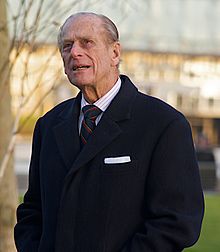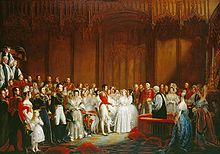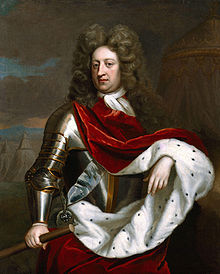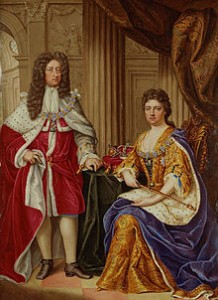“When King George died, [biographer Giles Brandreth] asked Prince Philip, “did you know what to expect?”
“No,” he said, laughing a little bleakly. “There were plenty of people telling me what not to do. ‘You mustn’t interfere with this.’ ‘Keep out.’ I had to try to support the Queen as best as I could without getting in the way. The difficulty was to find things that might be useful.”
“But there was the example of Prince Albert, the Prince Consort. [Brandreth] suggested, “You’d read biographies . . .”
“Oh yes,” An exasperated sigh. “The Prince Consort . . .” A pause. “The Prince Consort’s position was quite different. Queen Victoria was an executive sovereign, following in a long line of executive sovereigns. The Prince Consort was effectively Victoria’s private secretary. But after Victoria the monarchy changed. It became an institution. I had to fit in with the institution.” — Giles Brandreth, Philip And Elizabeth: Portrait of a Royal Marriagep. 215.


When Prince Philip described Prince Albert to Brandreth as Queen Victoria’s secretary, he was referring to the later period of Albert’s tenure as consort, when he was known as the architect of the Great Exhibition of 1851 and virtual co-ruler of Great Britain.
At the time of Victoria and Albert’s wedding in 1840, parliament and public opinion alike were determined to curtail any potential authority he might attain through his marriage. Just as Prince Philip was critiqued by senior British courtiers in the 1940s as a member of the comparatively impecunious Greek royal family, Prince Albert was caricatured as a penniless German prince, seeking his fortune as the Queen’s husband. One broadsheet of the period declared “Here comes the bridegroom of Victoria’s choice,/The nominee of [Governess] Lehzen’s vulgar voice;/He comes to take “for better or for worse”/England’s fat Queen and England’s fatter purse. (See Stanley Weintraub’s Victoria, p. 133.)

In the late seventeenth century, the future Queen Anne was equally indignant about the treatment of her husband by her father, King James II and her brother-in-law, King William III. Although George experienced few of the political difficulties encountered by Albert, receiving English citizenship and a place on the Privy Council and House of Lords at the time of his marriage, he was politically sidelined by Anne’s predecessors, who treated him with the same contempt expressed by Queen Victoria.
George had few political ambitions on his own behalf and was content to act as Anne’s proxy in the male realm of parliament. He wrote to a friend soon after his marriage in 1683, “We talk here of going to tea, of going to Winchester, and everything else except sitting still all summer, which was the height of my ambition. God send me a quiet life somewhere, for I shall not be long able to bear this perpetual motion.” (See R. O. Bucholz, The Augustan Court: Queen Anne and the Decline of Court Culture, p. 17.)
Although George’s transfer of loyalties from James II to William III in 1688 was important to the legitimacy of the Glorious Revolution, James supposedly sneered “So ‘Est il possible’ is gone too,” referring to his son-in-law’s habit of reacting to each previous defection by saying, “Is it possible?” William accepted George’s loyalty, and much needed income from his Danish properties, but made him unwelcome in his military activities.
During the 1690 Irish campaign, George traveled with the regular officers instead of the King’s suite, and he was prevented from volunteering for the navy during the 1691 Flanders expedition. Anne railed against William in her correspondence, referring to him as “Caliban” and “the Dutch Abortion” but she could do little to improve George’s status until she succeeded to the throne in 1702. As the Queen’s consort, George received the titles of Generalissimo and Lord High Admiral of the Navy but Anne shrewdly left the actual administration of these offices to John Churchill, Duke of Marlborough and his brother, George Churchill.
Prince Philip’s determination to reinvent the role of royal consort to reflect his own abilities and circumstances was shared by his predecessors. Prince George lacked the ambition of Philip of Spain and William of Orange, who already wielded sovereign authority at the time of their marriages and received the title of King in England. Prince Albert aspired to a more active role than George and gradually increased his influence over the monarchy during his marriage. Prince Philip recognized the differences between the nineteenth and twentieth century monarchical systems and adapted his role accordingly. Prince Philip’s long and successful tenure as a royal consort may break this trend as future consorts to reigning Queens may follow his example instead of seeking to reinvent the position.




Hmm.. Sounds a bit too dismissive of Prince Albert’s role. What about his role in organizing/promoting the Great Exhibition?